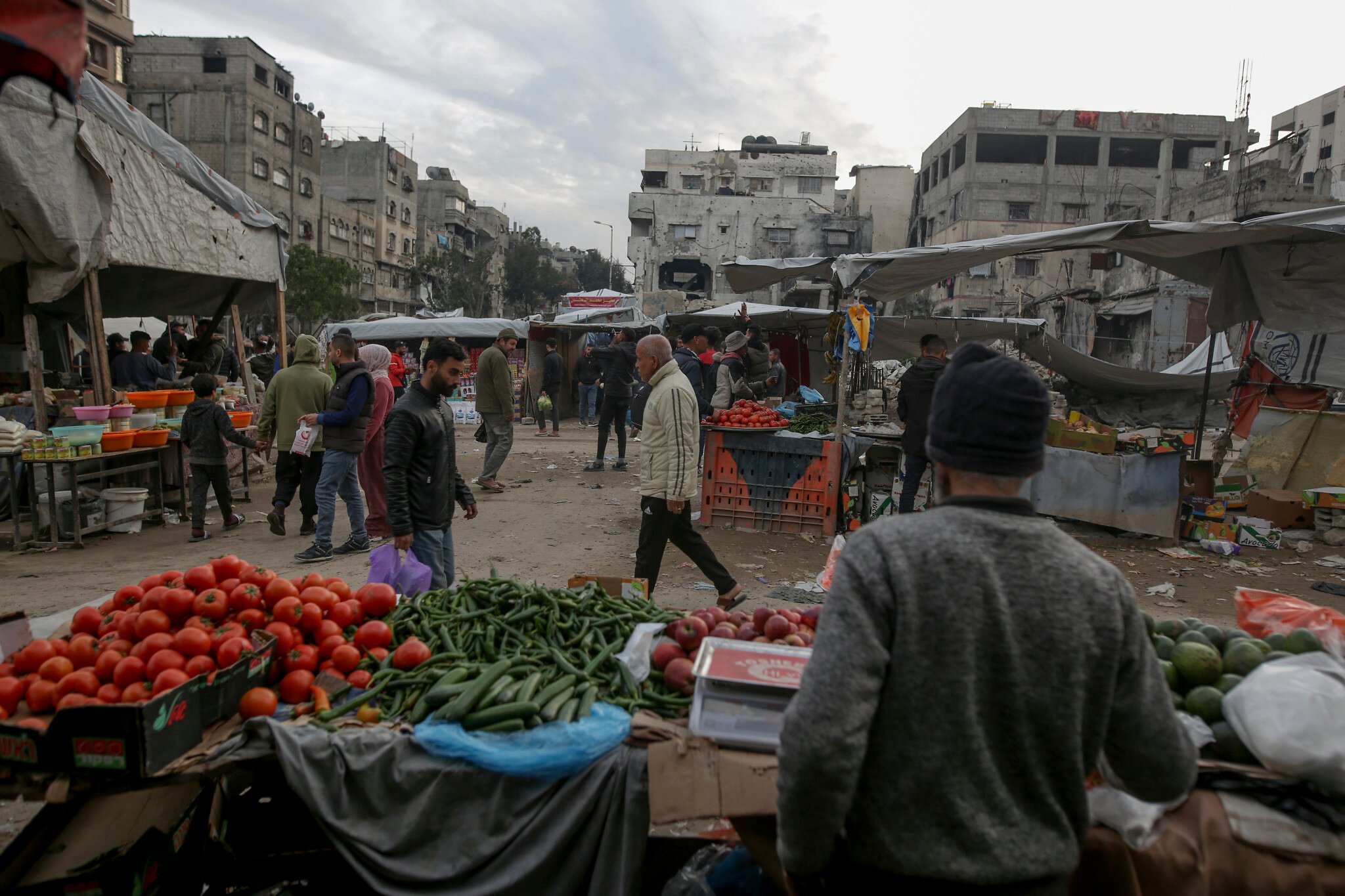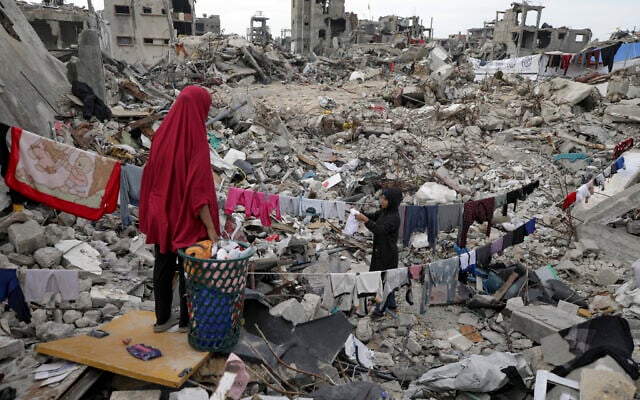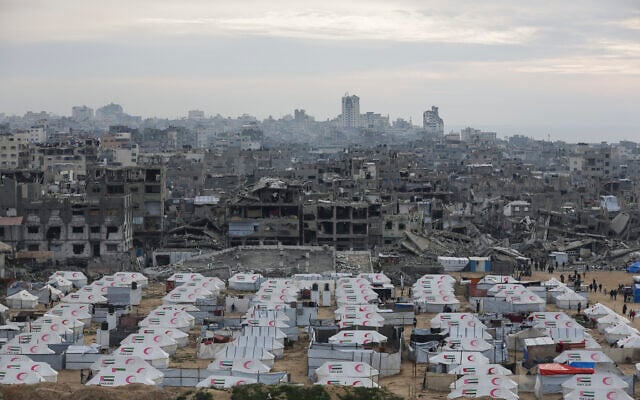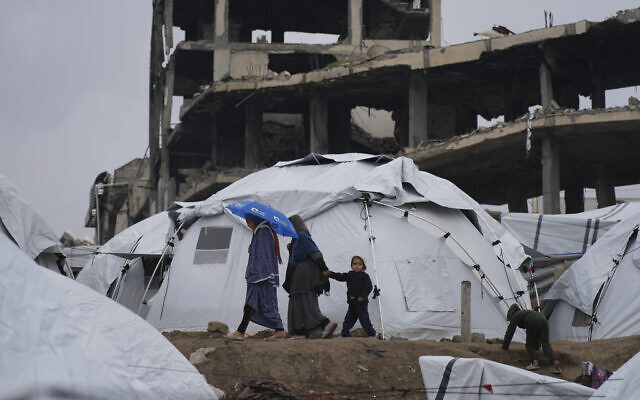



Israel’s cutoff of humanitarian aid to Gaza, declaring that it will only be allowed to start flowing again once Hamas agrees to release more hostages, has sent prices soaring and humanitarian groups into overdrive trying to distribute dwindling stocks to the most vulnerable.
After more than 16 months of war — sparked by the Hamas terror group’s October 7, 2023, invasion of southern Israel, when thousands of terrorists killed some 1,200 people and took 251 hostages — Gaza’s population is entirely dependent on trucked-in food and other aid.
Most are displaced from their homes and many need shelter. Fuel is needed to keep hospitals, water pumps, bakeries and telecommunications, as well as trucks delivering aid, operating.
Israel says the siege aims at pressuring Hamas to accept its spinoff ceasefire proposal, which — unlike the latter stages of the hostage-ceasefire deal agreed to in January — would see the release of further hostages prior to any talks on a permanent end to the war.
That deal’s now-expired first phase saw Hamas release 38 hostages, living and dead, as Israel released almost 2,000 Palestinian security prisoners and detainees, with fighting stopped in the Strip.
Prime Minister Benjamin Netanyahu said Tuesday that he is prepared to raise the pressure and would not rule out cutting off all electricity to Gaza if Hamas doesn’t budge.
Arab states have called the cutoff a “starvation policy.” Israel, which asserts the Hamas terror group uses aid to fund its attacks and consolidate its power, reportedly believes there is already enough aid accumulated in Gaza to last the enclave several months.
There’s no major stockpile of tents in Gaza for Palestinians to rely on during the aid freeze, said Shaina Low, communications adviser for the Norwegian Refugee Council. The aid that came in during the ceasefire’s first phase was “nowhere near enough to address all of the needs,” she contended.
“If it was enough, we wouldn’t have had infants dying from exposure because of lack of shelter materials and warm clothes and proper medical equipment to treat them,” she said.
Six infants in the Gaza Strip died from hypothermia during phase one, according to medics and health officials in the Hamas-run territory.
Aid groups are now trying to assess what stocks they have in Gaza.
“We’re trying to figure out, what do we have? What would be the best use of our supply?” said Jonathan Crickx, chief of communication for UNICEF. “We never sat on supplies, so it’s not like there’s a huge amount left to distribute.”
He predicted a “catastrophic result” if the freeze continues.
During the ceasefire’s first phase, humanitarian agencies rushed in supplies and quickly ramped up their capabilities. Aid workers set up more food kitchens, health centers and water distribution points. With more fuel coming in, they were able to double the amount of water drawn from wells, according to the UN humanitarian coordination agency, or OCHA.
The United Nations and associated nongovernmental organizations brought in around 100,000 tents as hundreds of thousands of Palestinians tried to return to their homes, only to find them destroyed or too damaged to live in.
But the progress relied on the flow of aid continuing.
The International Organization for Migration now has 22,500 tents sitting in its warehouses in Jordan, after supply trucks brought back their undelivered cargo once entry was barred, said Karl Baker, the agency’s regional crisis coordinator.
The International Rescue Committee has 6.7 tons (14,771 pounds) of medicines and medical supplies waiting to enter Gaza, the delivery of which is now “highly uncertain,” said Bob Kitchen, vice president of the Emergencies and Humanitarian Action Department.
“It’s imperative that aid access is now immediately resumed. With humanitarian needs sky high, more aid access is required, not less,” Kitchen said.
Medical Aid for Palestinians said it has trucks stuck at the border carrying medicine, mattresses and assistive devices for people with disabilities. The organization has some medicine and materials in reserve, said Tess Pope, MAP spokesperson, but, she said, “We don’t have stock that we can use during a long closure of Gaza.”
The UN’s humanitarian office said Tuesday that prices of vegetables and flour shot up after the crossings closed.
Sayed Mohamed al-Dairi walked through a bustling market in Gaza City just after the cutoff was announced. Prices that had just started to come down during the ceasefire had jumped back up, as sellers hiked the prices of their dwindling wares.
“The traders are massacring us, the traders are not merciful to us,” he said. “In the morning, the price of sugar was 5 shekels. Ask him now, the price has become 10 shekels.”
In the central Gaza city of Deir Al-Balah, one cigarette priced at 5 shekels ($1.37) before the cutoff now stands at 20 shekels ($5.49). One kilo of chicken (2.2 pounds) that was 21 shekels ($5.76) is now 50 shekels. ($13.72). Cooking gas has soared even more, from 90 shekels ($24.70) for 12 kilos (26.4 pounds) to 1,480 shekels ($406.24).



